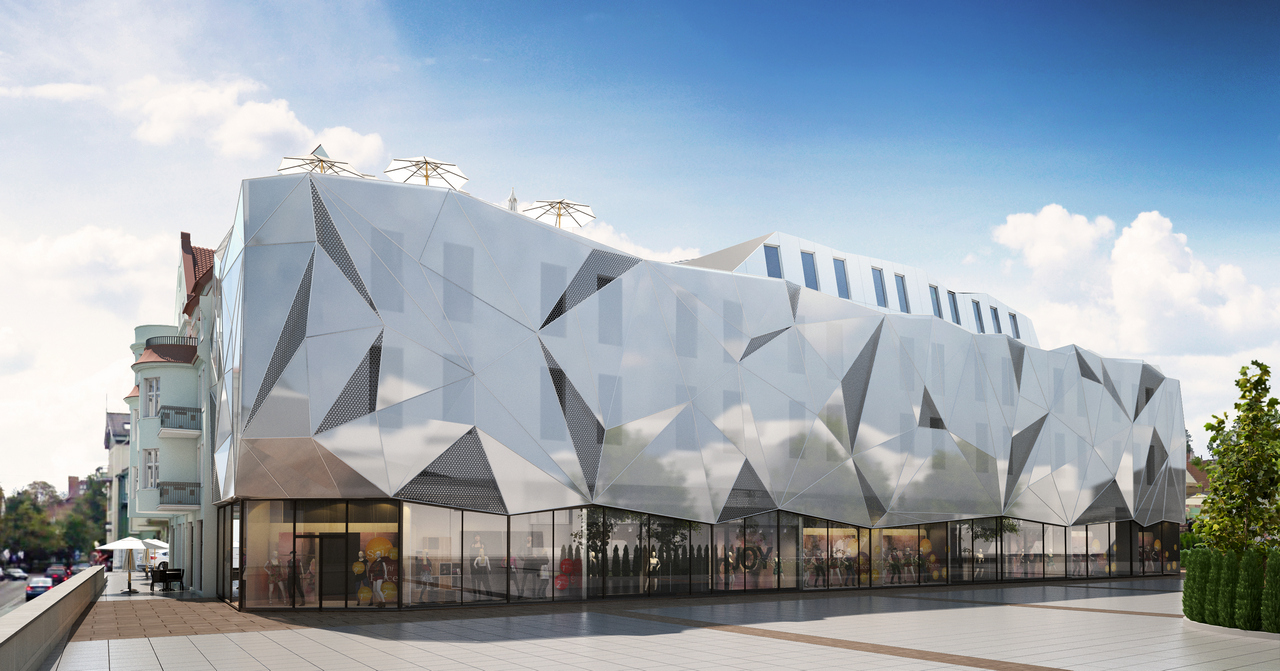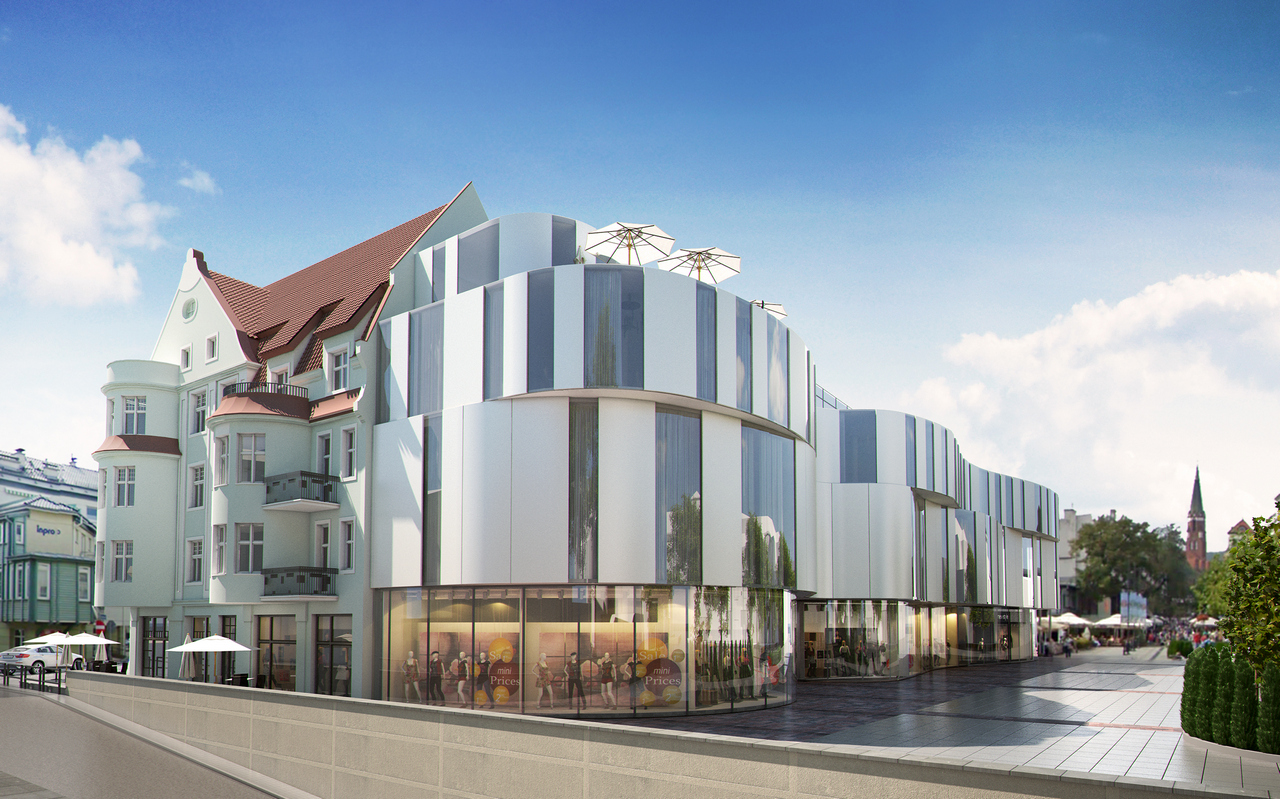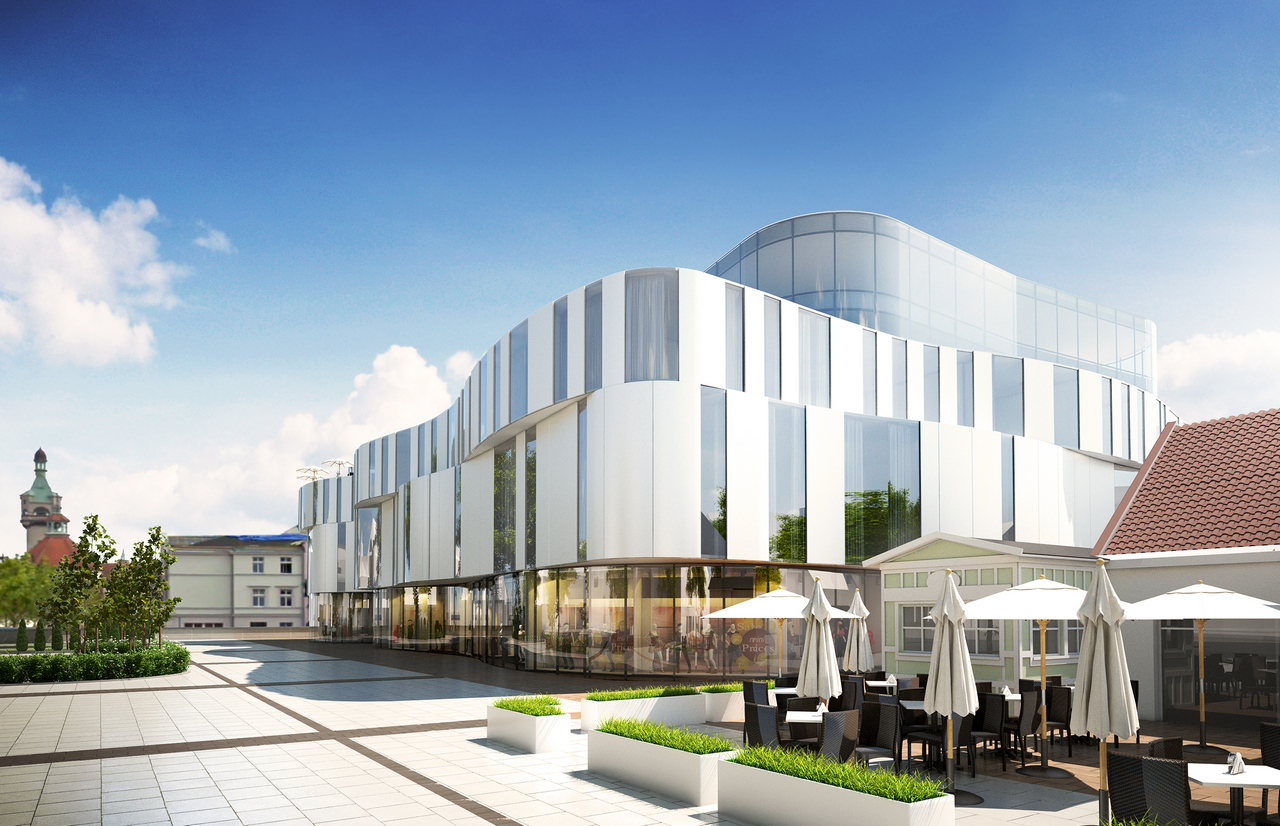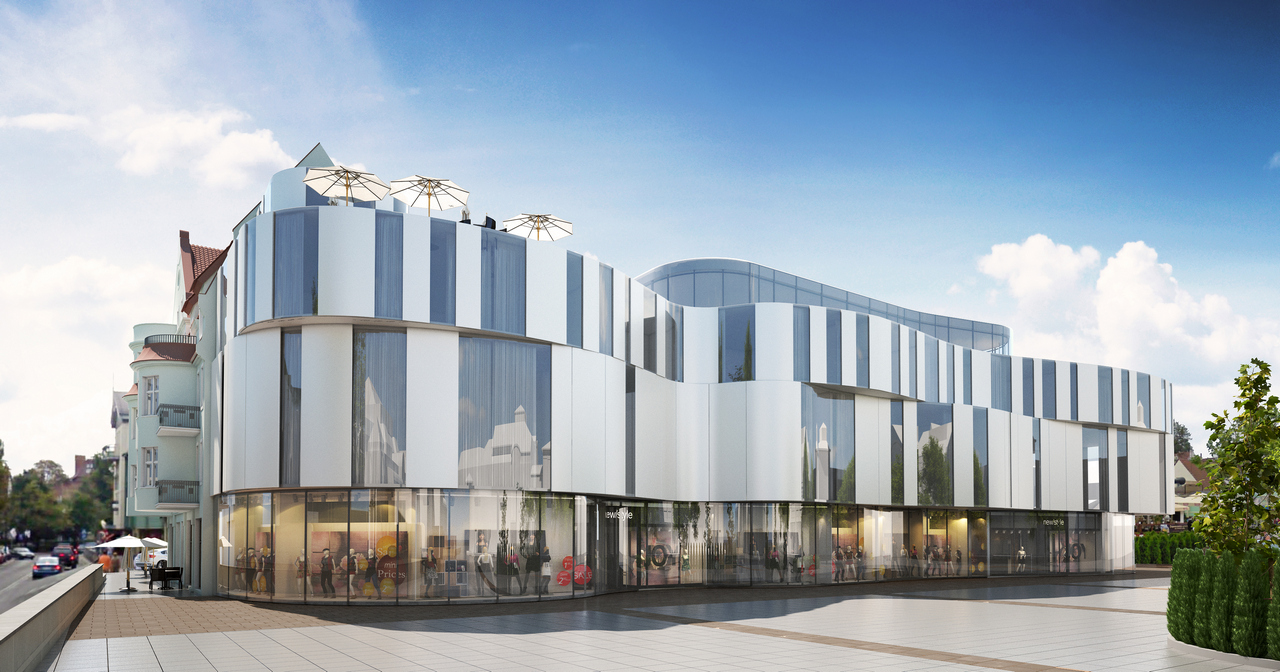ALGA SOPOT
Sopot, ul. Bohaterów Monte Cassino 60
ECO-CLASSIC, Warszawa
2014
- lot area: 2857,8 m2
- buildup area: 2364,0 m2
- total area: 16617,0 m2
- over-ground area: 9255,0 m2
- under-ground area: 7362,0 m2
- total volume: 71652,0 m3
- floor area: 14348,9 m2 w tym:
- over-ground floor area: 8141,5 m2
- under-ground floor area: 6207,4 m2
- retail space floor area: 5306,0 m2
- apartment hotel floor area: 2463,0 m2
- number of hotel apartments: 40
- number of parking lot spaces: 158
- number of parking spaces in retail area: 148
- number of parking spaces in residential area: 10
A two-variant concept design
A concept design of a commercial building at 60, Bohaterów Monte Cassino Street, Sopot. The building would make the south frontage of the Plac Przyjaciół Sopotu, instead of a building set for demolitions, the so called Alga. The new building, covered with flat roofs, would comprise two under-ground and five over-ground levels. A part of the building is fitted with additional underground area between the ground-floor and the the -1 floor. The building contains a retail and gastronomical part, as well as an apartment hotel. It has also been varied in the fields of architectural expression and facade materials. The differences reflect two distinct variations of the architectural concept.
VARIANT A
A proposition of an expanded facade of the lower part thanks to utilising an aluminium and glass curtain fitted with aluminium mesh fragments for the first two levels. The curtain is formed by triangular and rectangular surfaces set at various angles in relation to the outer structure walls (the inner face of the vented facade). The maximum variation in the level of border parts of the curtain is 80 cm. The ground-floor level has been designed wit a flat aluminium and glass wall utilising fully transparent glass. The upper part is a prism with facades made of ceramic plates and windows aligned with the facades.
VARIANT B
A building characterised by a so-called "soft form" has been designed by shaping the facades to be flowing and misaligned on particular levels. To achieve the result vertical articulation was made due to variation in materials (glass and ceramics) of different widths. The upper part, also flowing in form, has been designed entirely as a glass curtain utilising reflexive glass. In effect the dominance of this part over the city area would be avoided.









